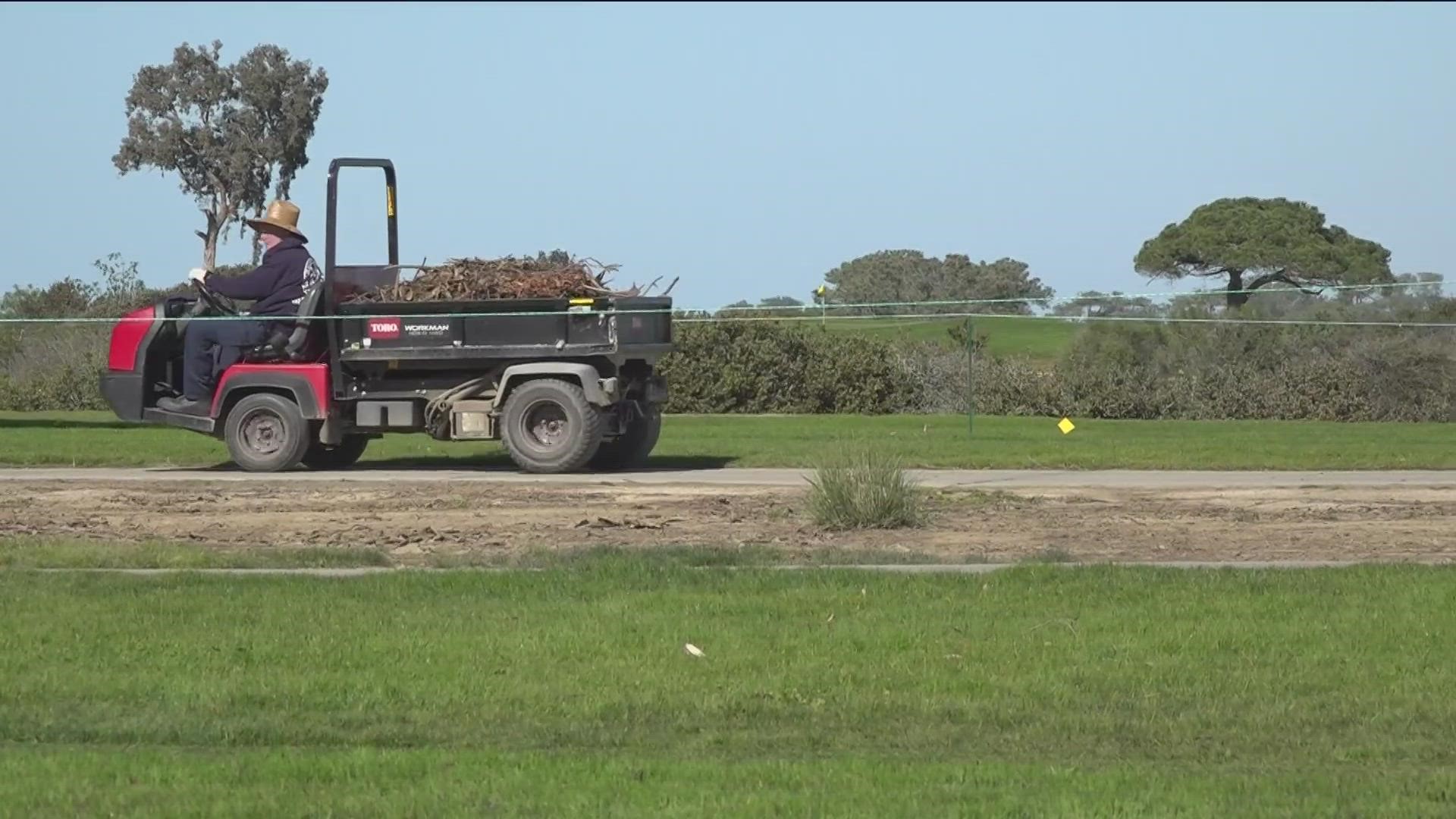SAN DIEGO — Tens of thousands of golf fans are watching the world's top golfers tee off at the Farmers Insurance Open. The tournament sits on towering cliffs that stand starkly against the picturesque backdrop of the Pacific Ocean.
But in that backdrop sits a worrying reminder of the tremendous power of Mother Nature — one that has forced the golf community to reevaluate its relationship with the environment.
"Golf long ago understood that to be viable in California, we had to be a leader in playing that part," said Craig Kessler, public affairs director for the Southern California Golf Association.
Bluff collapse
Last week, a chunk of cliff collapsed at Black's Beach — a half-mile away from the 12th hole at Torrey Pines — sending massive pieces of rock sprawling across the shore.
The collapse was influenced by a historic stretch of atmospheric rivers that battered California for weeks, leading to instability among the bluffs. But it's just one chapter in the dramatic back-and-forth severe weather that has plagued the state for years — especially a decades-long megadrought.
"Mother Nature is in the process of bailing us out," Kessler remarked about the recent rain. "If we had a fourth year like the last three, we would be in serious trouble in Southern California."
Megadrought
That severe drought, which affected 90% of the state by the end of 2022, led to historic water restrictions in Southern California — impacting millions of people.
The Los Angeles Department of Water and Power says L.A.-based golf courses use about 1.6 billion gallons of drinking water each year, about 1% of the total potable water used in the city. Meanwhile, courses use only about one billion gallons of recycled water.
Those restrictions are also pushing golf courses across the region to incorporate new technology to become more efficient with their water usage.
Sustainability
Torrey Pines Golf Course now uses recycle water, a trend that is becoming more and more frequent. Kessler estimates that 42% of the golf courses in Southern California use recycle water.
"It would be 100% if we could get access to it," Kessler said. "The access is the problem."
Improving access isn't the only way to promote sustainability within the golf community. Kessler says that since the megadrought started in 2000, there has been a significant shift in how courses incorporate new technology. That movement became especially energized by the '08-'09 drought in Southern California.
"I know that's the moment that the golf community began working with San Diego Public Utilities, Los Angeles Water and Power, Coachella Valley Water District on a very intimate level to collaborate on reducing that water footprint," Kessler said.
Some of those changes include updating irrigation systems to become more efficient, incorporating soil sensors to prevent wasted water and replacing existing grass with new types that can use half as much water while still remaining green — an especially valuable tool in the desert.
"The golf community is extremely proud of the record that it has had for about a quarter of a century in reducing its water footprint," Kessler said. "I would say the golf industry is at least in sync, and hopefully ahead, of the rest of a lot of the sectors in California."
While improving access and new technology can promote harmony within California's delicate water situation and the golf world, true sustainability requires the whole community to get involved.
"I would say it's less all of those innovative things that I talked about... than it is getting the entire community to buy into it completely," Kessler said.
That's one reason why dozens of STEM students from the Millennial Tech Middle School visited Torrey Pines on Monday. This innovative outreach program gives students a first-hand look at the maintenance that goes into a golf course and how they promote water conservation and habitat management.
“When I pass by a golf course, I'm like, oh, it's just a' big patch of grass, it probably doesn't take that much just like watering it every day or whatever,'” said Henry Anderson, a student in seventh grade. "So now that I know it's like a lot more to it than just watering your grass every day."

